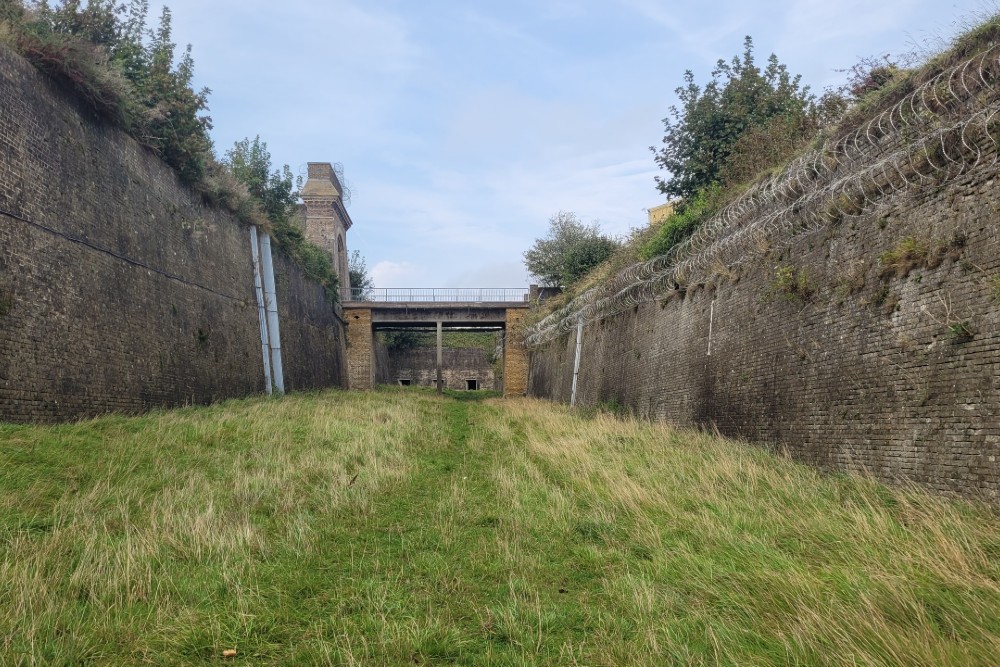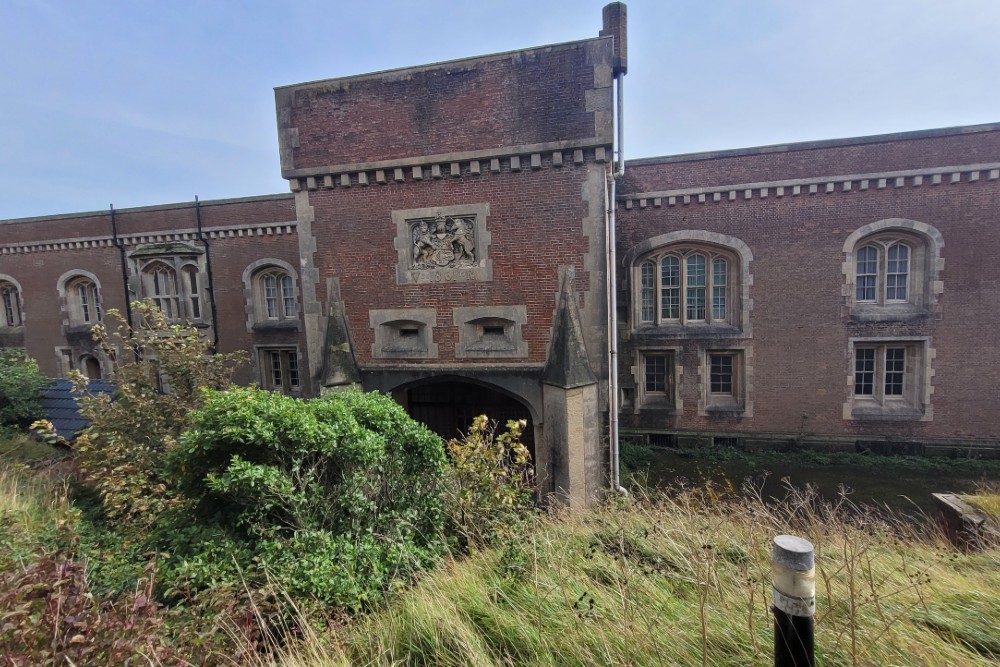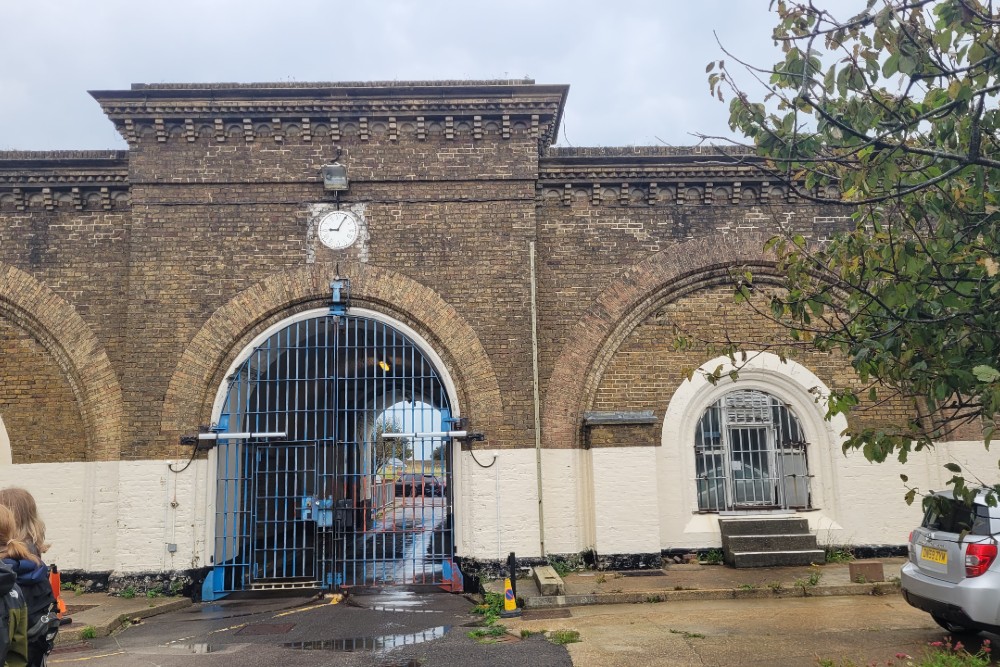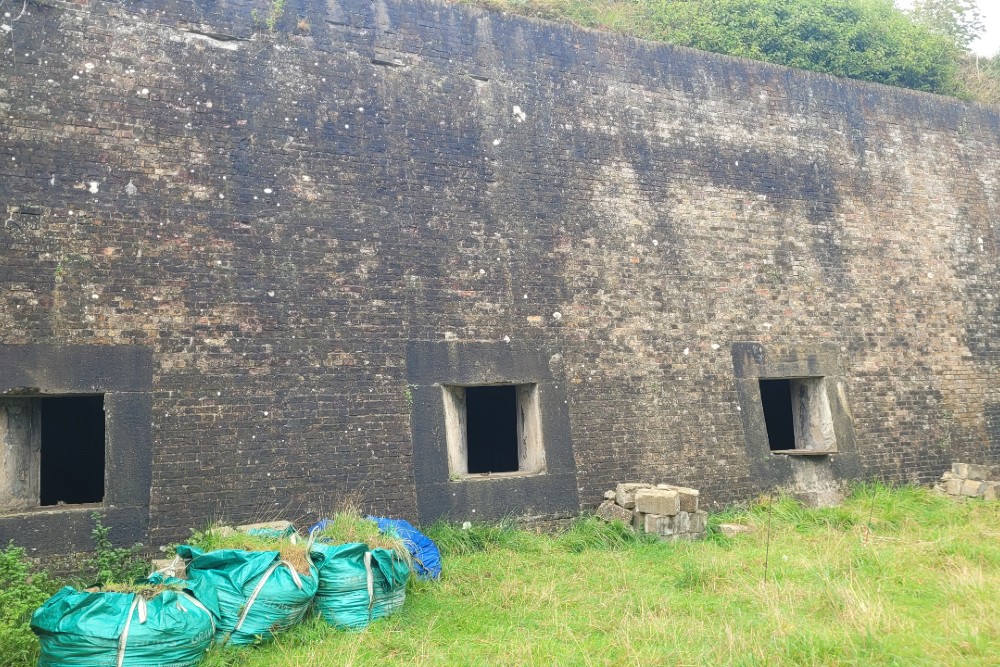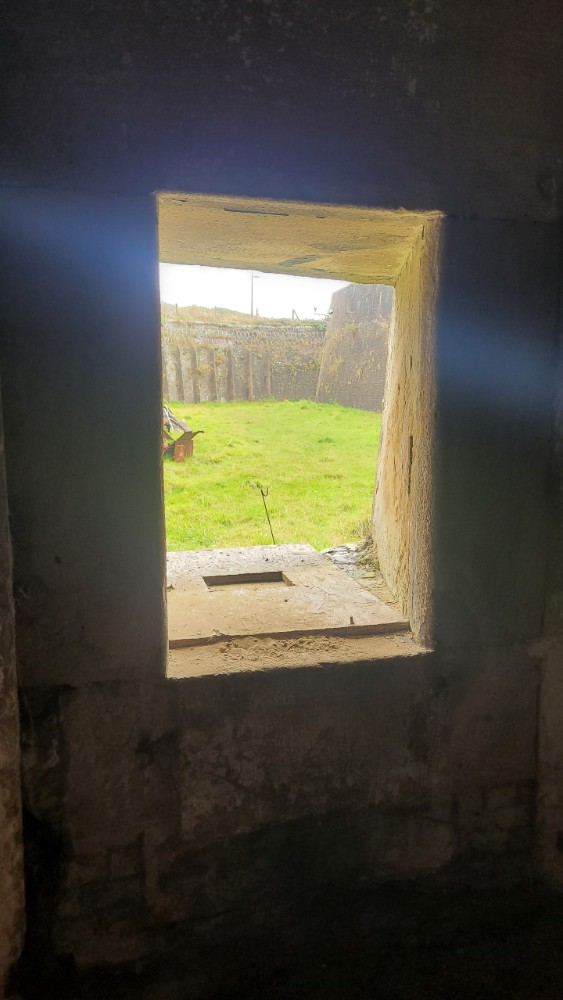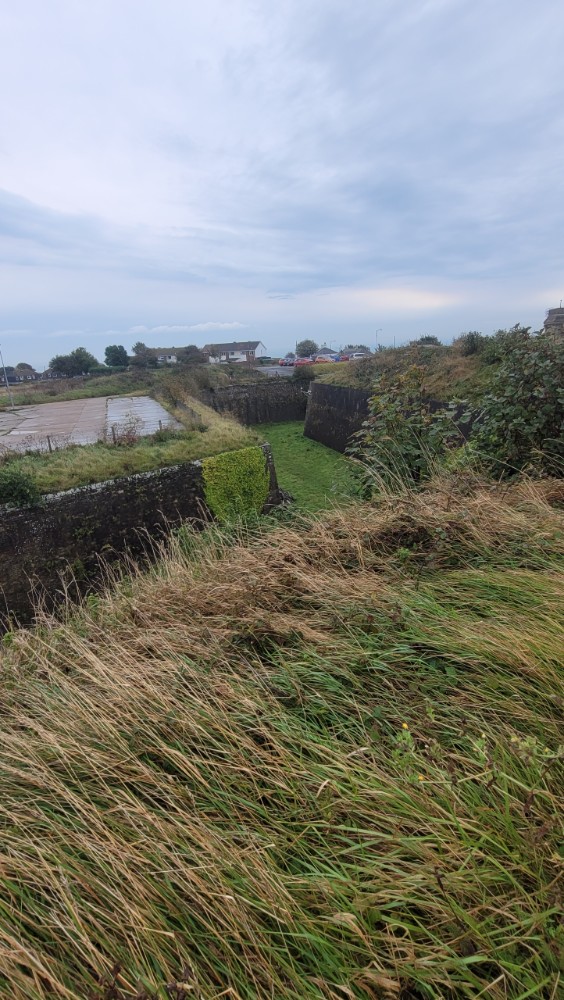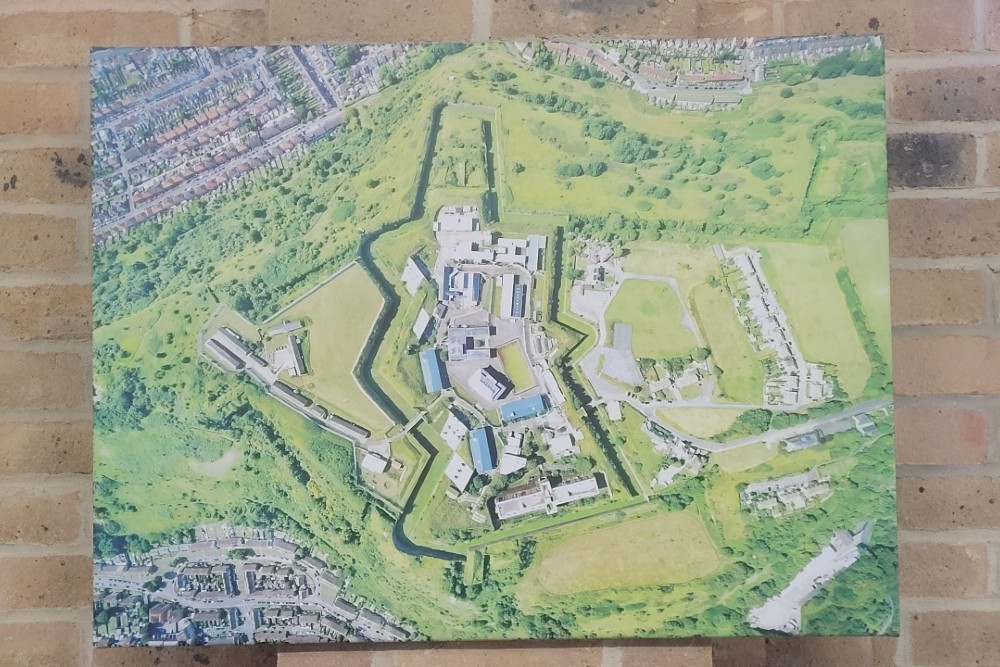The Citadel Dover
The Citadel formed the western arm of Dover's defences with Dover Castle being the eastern arm. Construction began on the area known as The Western Heights in 1779 and the design, size and strength was improved especially during Napoleon's rise to power. After Waterloo, the complex was still not complete and work almost stopped and the facility was unmanned. With the threat of Napoleon work was recommenced and the defences were modernised under Lord Palmerston's direction. It wasn't until 1861 that the first infantry battalion moved into the barracks. Its garrison was sent to South Africa in 1899 to serve in the Boer War. By 1900 it was no longer considered as a land fortress but gained a new role in defending the Dover straits with artillery and was equipped with 6 inch and 9.2 inch Breach Loading guns.
During WW1 it was garrisoned by the 3rd East Kent Regiment who were training men to be sent abroad. It was also equipped with a 3 inch QF gun as defence against German bombers and Zeppelins.
During WW2 additional pillboxes and observation posts were built and troops still manned the coastal artillery. Anti aircraft defences were added and the ditches mined.
In January 1944 a Junkers JU 88 crashed at the citadel gate and later that year the Western Heights was emptied of troops.
The fort remained in Army hands until 1954 when it became a prison which resulted in many of the underground tunnels and galleries being filled in and buildings demolished to make it 'escape proof'. In 2015 the prison was closed and the site passed into private ownership but with help from Lottery grants and the Western Heights Preservation Society work has begun the refurbish some of the defences. Occasional opportunities are available for tours in some of the underground areas and surviving contemporary buildings.
Do you have more information about this location? Inform us!
Source
- Text: Sharky Ward
- Photos: Anthony (Sharky) Ward
- The Citadel
Nearby
Museum
- Secret Wartime Tunnels - Dover
- Dover Castle - Dover
- Princess of Wales's Royal Regiment & Queen's Regiment Museum Dover Castle - Dover
Point of interest
Monument
- War Memorial South Eastern and Chatham Railway - Dover
- Memorial Unknown Warrior Dover - Dover
- Dunkirk Memorial Dover - Dover
Cemetery
- Commonwealth War Graves St Mary New Cemetery - Dover
- Commonwealth War Graves Buckland Cemetery - Dover
- Commonwealth War Graves Dover Jewish Cemetery - Dover
